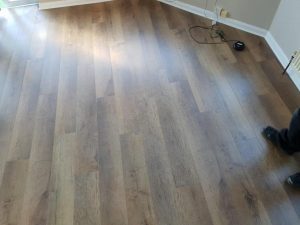
Vinyl flooring is one of the most common and popular forms of flooring. It is easy to install, versatile, durable, and offers many options for pattern, color, and design. However, it does have a few drawbacks. Some vinyl flooring materials contain toxic chemicals that can be dangerous if inhaled, while others require extra care to maintain their beauty. Fortunately, manufacturers are coming up with new products that are both durable and affordable.
The most basic types of vinyl flooring are sheet or tile. Sheet vinyl is the most common form and usually comes in 6″ or 12″ wide rolls. To ensure a smooth finish, you will need to carefully cut the sheets to size. You can also purchase a planking system, which allows you to easily replace a damaged plank without having to replace the entire floor.
Tiles may seem more like a novelty than a viable option, but they are more durable. Many of the latest vinyl tiles mimic the look of ceramic or marble. Another benefit is that you can install them over concrete and existing floors. If you need a more uniform feel underfoot, you can add plywood to the mix.
Luxury vinyl tile (LVT) is another good choice. While it is a bit more expensive than sheet vinyl, it has the most variety and is easy to install. Most luxury vinyl tiles come with a cushioned layer for added comfort.
The most common type of sheet vinyl is felt-backed, which is typically installed using double-sided tape. In addition to the cushion layer, a top coat layer provides a nice sheen and is designed to resist wear. A cushioned vinyl is ideal for springing steps and for those with bad feet.
For those with a little more money to spend, there are high-end styles that simulate the look of wood, stone, and ceramic. Alternatively, you can choose to install linoleum, a naturally occurring product. Linoleum does not need to be waxed as often as the more synthetic counterparts, but it does require occasional maintenance.
In addition to the cushioned layer, there is a polyurethane top coat layer to protect the design. The layer is often referred to as the “wear layer.” Depending on the amount of traffic your floors receive, you will need a thinner or thicker wear layer.
As with any kind of flooring material, you can expect to see some wear. However, it is not unusual for vinyl to last for years. That said, it is always a good idea to clean your floor regularly to prevent sharp edges from scratching. Also, avoid mopping with abrasive or harsh cleaners. Instead, try cleaning with a vinegar solution. Vinegar is safe to use on your flooring, and won’t leave behind any soapy residue.
While there are plenty of other vinyl types, they all have a few similarities. Vinyl is durable and resilient, but it does have a few drawbacks. Among them, it is difficult to extinguish a fire if the vinyl has already been installed. Other downsides include a lack of recycling facilities and the tendency to release toxic chemicals into the air.
